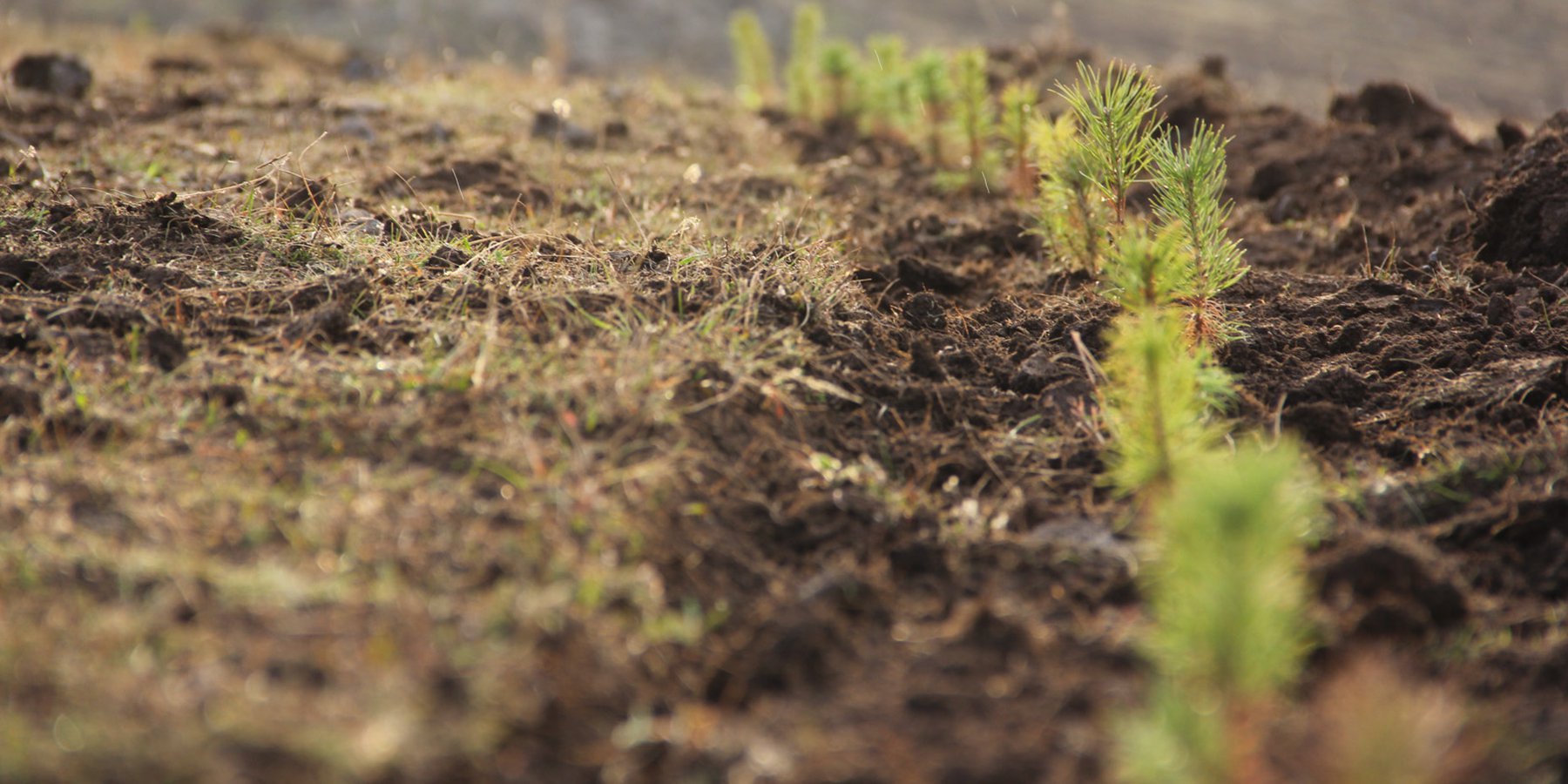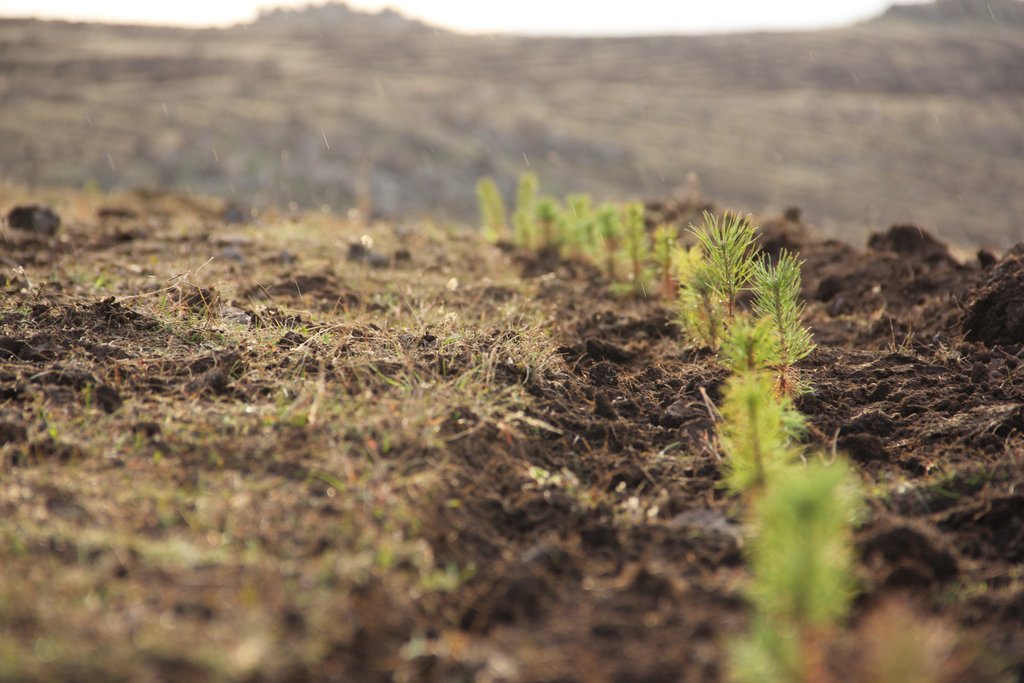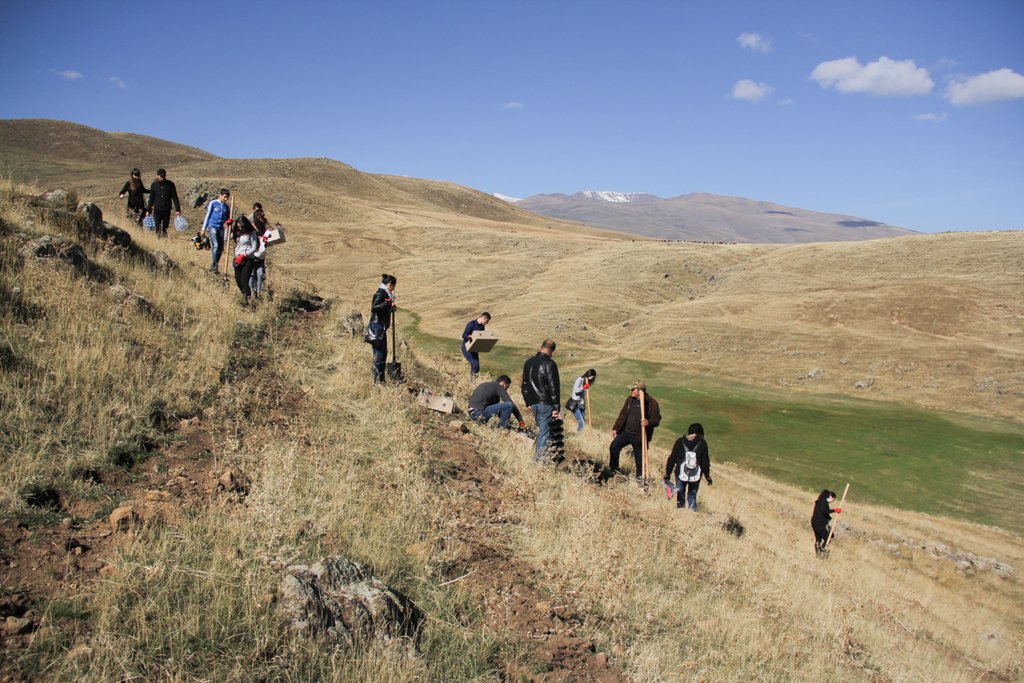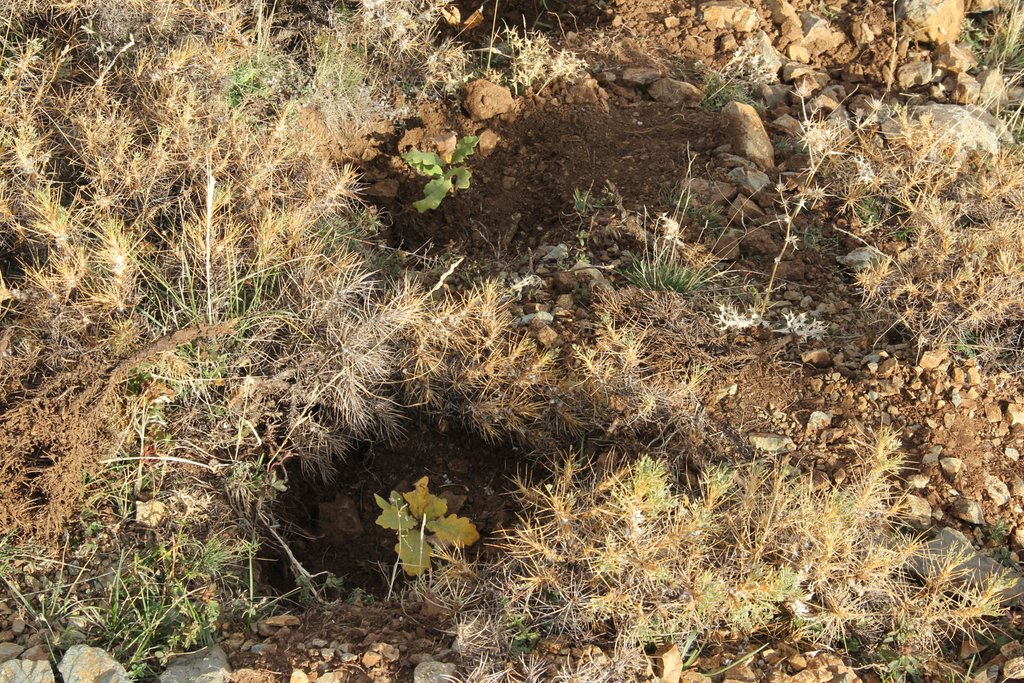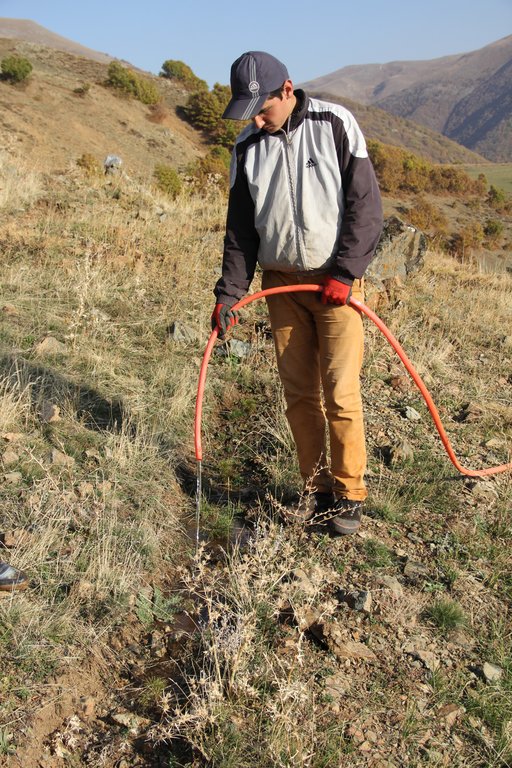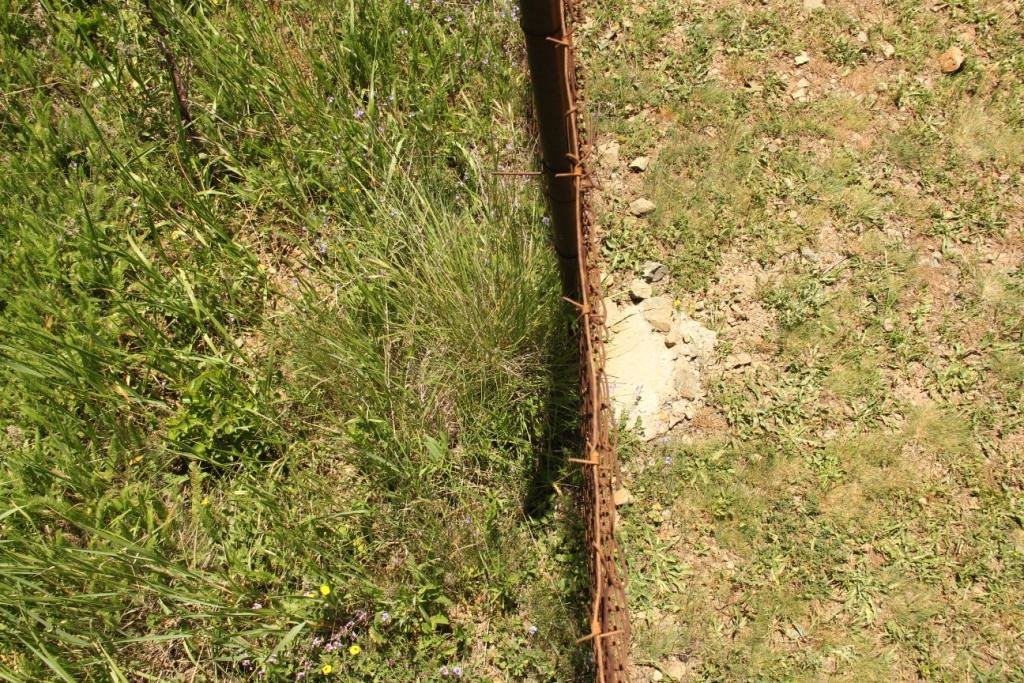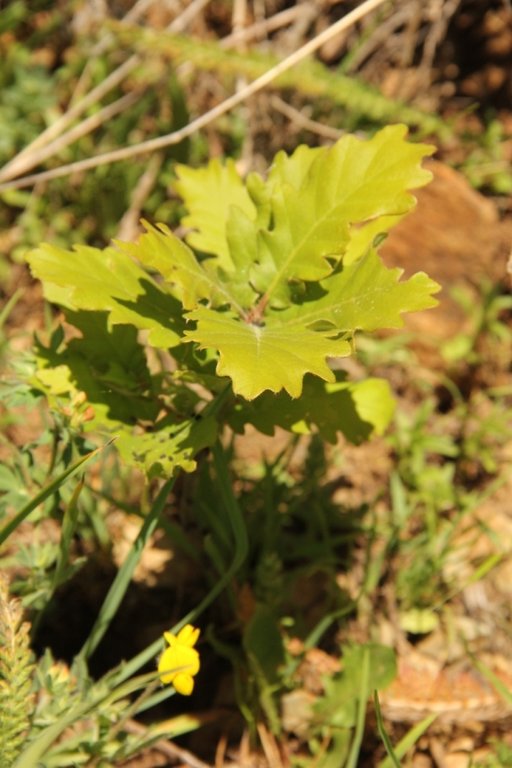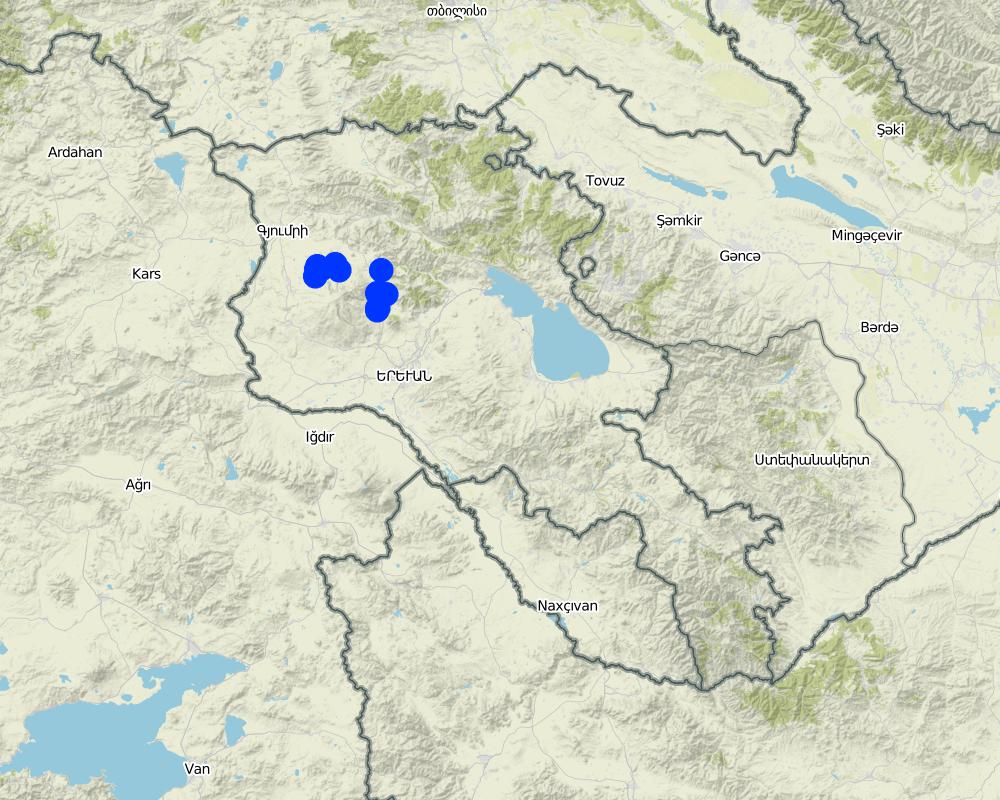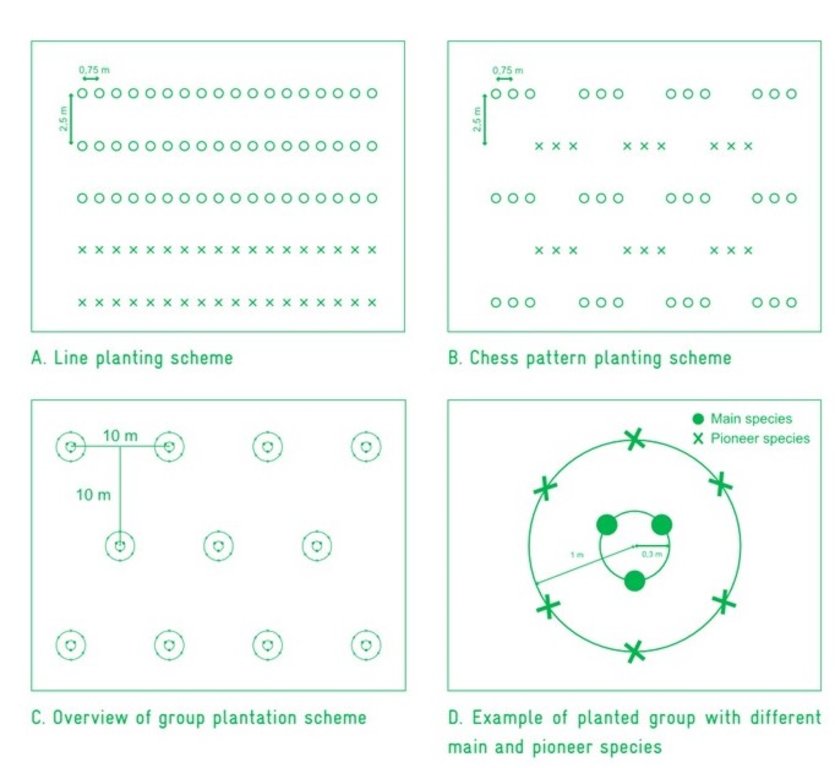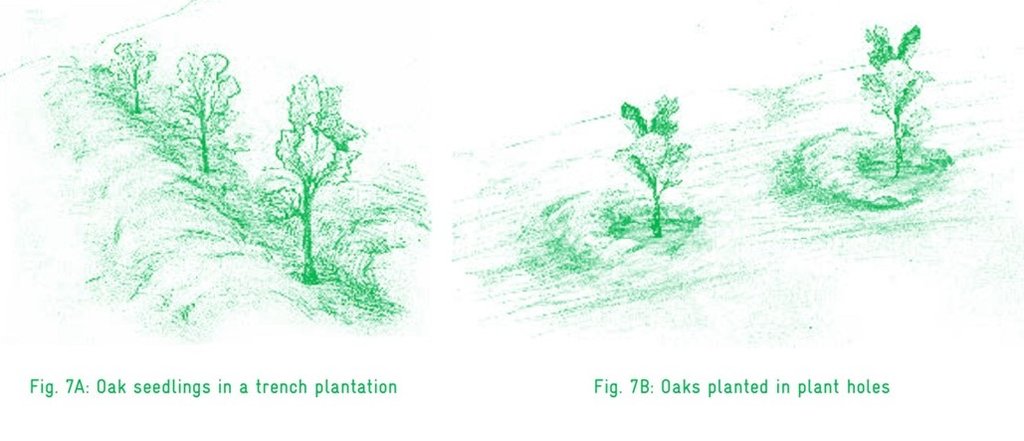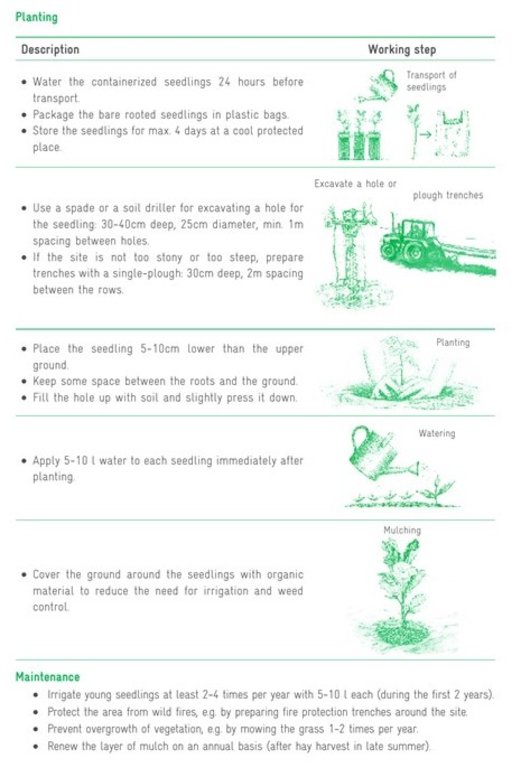High-altitude afforestation for erosion control [Армени ]
- Шинийг нээх:
- Шинэчлэх:
- Мэдээлэл цуглуулсан: Hanns Kirchmeir
- Редактор: Artur Hayrapetyan
- Хянагч: Ursula Gaemperli
technologies_4101 - Армени
Бүлгүүдийг үзэх
Бүгдийг харуулах Бүгдийг хаах1. Ерөнхий мэдээлэл
1.2 Технологийг үнэлэх, баримтжуулах ажилд хамаарах мэдээлэл өгсөн хүмүүс, байгууллагуудын холбоо барих мэдээлэл
ГТМ мэргэжилтэн :
Технологи баримтжуулах/үнэлэх ажилд дэмжлэг үзүүлсэн төслийн нэр (шаардлагатай бол)
Integrated Biodiversity Management, South Caucasus (IBiS)Технологи баримтжуулах/үнэлэх ажилд дэмжлэг үзүүлсэн байгууллага(ууд)-ын нэр (шаардлагатай бол)
Deutsche Gesellschaft für Internationale Zusammenarbeit (GIZ)1.3 WOCAT-аар баримтжуулсан өгөгдлийг ашиглахтай холбоотой нөхцөл
Мэдээллийг хэзээ (газар дээр нь) цуглуулсан бэ?
04/10/2018
Эмхэтгэгч болон гол мэдээлэгч хүн(хүмүүс) WOCAT аргачлалаар баримтжуулсан мэдээллийг ашиглахтай холбоотой нөхцлийг хүлээн зөвшөөрсөн.
Тийм
1.4 Технологи тогтвортой гэдгийг баталгаажуулах
Энэ технологи азрын доройтлыг бууруулахад нөлөө үзүүлэхгүй тул газрын тогтвортой менежментийн технологи болж чадахгүй юу?
Үгүй
1.5 ГТМ-ийн Арга барилын талаархи санал асуулгын(д) суурь мэдээлэл
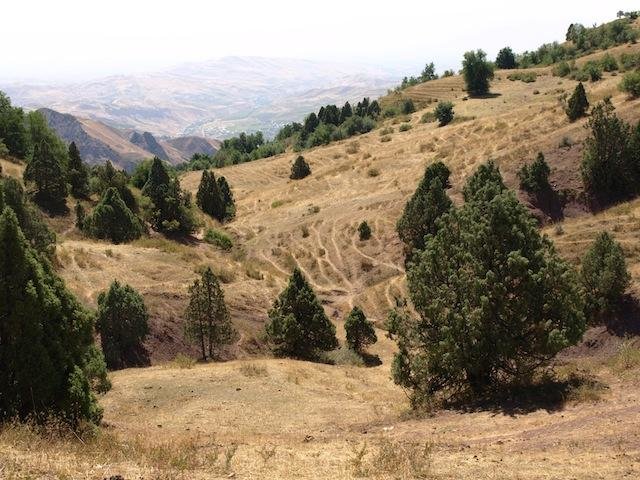
Sustainable managements on pasture and forest lands based … [Тажикистан]
Sustainable managements on pasture and forest lands based on natural regeneration by electrified fences
- Мэдээлэл цуглуулсан: Kakubari Yochitaka

Afforestation/Tree planting [Уганда]
Tree planting carried out by individual land users on hilly slopes to improve soil cover ,reduce wind strength , provide wood fuel & household income.
- Мэдээлэл цуглуулсан: Wilson Bamwerinde
2. ГТМ Технологийн тодорхойлолт
2.1 Технологийн товч тодорхойлолт
Технологийн тодорхойлолт:
Afforestation is a key technologies to protect soil against erosion and provide a wide range of ecosystem services. In this case, afforestation at high altitudes, which is particularly challenging, with the primary purpose of erosion control were planted in small patches with different methods. They form the basis for future community forests in Armenia.
2.2 Технологийн дэлгэрэнгүй тайлбар
Тодорхойлолт:
Forests are - in terms of biomass accumulation and stability - the most successful ecosystems in the world. Natural forest ecosystems offer multiple ecosystem services, such as timber and fuel wood provision, water purification, carbon sequestration. In mountainous landscapes, forests have an additional protective function against erosion and natural hazards (e.g., avalanches, landslides, debris flows or rock falls). In the South Caucasus, two natural limits restrict forest expansion: at 2.300-2.600m a.s.l. the upper tree line is visible, whereas steppe and semi-desert ecosystems form the lower tree line.
Socio-economic and geo-physical living conditions:
The intervention area is located at the northern to eastern slopes of Mount Aragats (4013m). The villages are located at 1600 to 1800 m above sea level where the slope meets a plain with stepic soils and crop production while the slopes of the mountains are used for livestock grazing (sheep and cattle).
Purpose of afforestation:
By means of afforestation of degraded pastures, mountainous areas that suffer from erosion and overgrazing should be rehabilitated and erosion protection capacity enhanced. At the same time, the afforestation sites should form the basis for future community forests providing a wide range of ecosystem services, a concept that has not yet been established in Armenia.
Implementation
Between 2014 and 2017 more than 200 hectares were fenced for afforestation, 145 ha were actively afforested in 10 different communities around Mount Aragats in Armenia. The average size of the 20 plots is 10 ha (35 ha being the largest site, 1 ha the smallest one).
The afforestation included different species combinations, planting schemes and methods to determine most cost-efficient afforestation methods for Armenian conditions. All afforestation took place at elevations between 1900 and 2300 m.a.s.l.. The afforestation included fencing of the area to protect the afforestation site against grazing, the preparation of the planting sites according to fixed planting schemes, the actual planting in lines with trenches, single plant holes and group plantings. For some sites, additional irrigation was established for the first years. Particular attention was paid to the species selection which explicitly included fruit trees and shrubs to ensure local economic returns.
Practical experiences
A wide range species was tested. Within the given climate context, pine (Pinus sylvestris), the main non-native species as well as native maple (Acer trautvetteri), Persian Oak (Quercus macranthera) and birch (Betula litwinowii) showed the best results. Particular attention was paid to adapted species to create resilient forest-shrubland with a large number of tree species. In general, planting in trenches shows highest survival rates. Bare root system and containerized seedlings were used for planting. Containerized seedlings definitely provide better survival rate in comparison with bare root system seedlings. Additionally, mulch cover was provided to protect seedlings and keep soil humidity. The main maintenance measures are repeated mulching and weed control and irrigation during the first 3 years. Furthermore, some replanting is continuously taking place as the sites are facing tough environmental conditions (hot summers, drought, short vegetation period).
The plantation was organised and supervised by local NGO's (ATP Armenian Tree Project, ESAC Environmental Sustainability Assistance Center) in close cooperation with the local village population. In a Memorandum of Understandig between the Armenian Ministry of Territorial Administration and Development, the local village administration and GIZ the share of payed labour and own contribution was fixed beforehand.
Impacts and perception
After the first years already first successes are becoming visible contributing to increased vegetation cover, increased biomass and improved soil protection. The communities are proud to be amongst the first in Armenia with a community forest. However, slow growth will require continuous commitment and care on behalf of the community.
2.3 Технологийн гэрэл зураг
2.4 Технологийн дүрс бичлэг
Тайлбар, товч тодорхойлолт :
Short video of ESAC, the implementing NGO, on afforestation background and techniques
https://www.youtube.com/watch?v=cLZ5ucDDclI
Он, сар, өдөр:
28/10/2018
Байршил :
Aragatsotn and Shirak Marzes
Зураглаачийн нэр :
ESAC NGO (Khachatur Khachtryan)
Тайлбар, товч тодорхойлолт :
Short video of ESAC, the implementing NGO on different fencing techniques used for protecting the afforestation sites
https://www.youtube.com/watch?v=INRnvnkYzCE
Он, сар, өдөр:
28/03/2018
Байршил :
Aragatsotn and Shirak Marzes
Зураглаачийн нэр :
ESAC NGO (Khachatur Khachtryan)
2.5 Энэ үнэлгээнд хамрагдсан технологийг хэрэгжүүлсэн улс орон / бүс нутаг / байршил
Улс :
Армени
Улс/аймаг/сум:
Shirak and Aragatsotn Marzes
Байршлын дэлгэрэнгүй тодорхойлолт:
Lusagyugh, Saralanj, Harich, Arayi, Quchak, Hnaberd, Mets Manatash, Pokr Mantash, Nahapetavan
Тайлбар:
Differerent small afforestation plots between 1 and 30 ha with a total of approximately 200 ha
Map
×2.6 Хэрэгжих огноо
Байгуулсан тодорхой оныг мэдэхгүй бол баримжаа хугацааг тодорхойл:
- <10 жилийн өмнө (саяхны)
2.7 Технологийн танилцуулга
Технологийг хэрхэн нэвтрүүлснийг тодорхойл:
- Гадны төсөл/хөтөлбөрийн дэмжлэгтэйгээр
Тайлбар (төслийн төрөл г.м.):
This project introduced community-managed forests for erosion control to different communities. Different planting techniques and species were piloted to identify most appropriate afforestation and management methods.
3. ГТМ технологийн ангилал
3.1 Технологийн үндсэн зорилго (д)
- Газрын доройтлыг бууруулах, сэргийлэх, нөхөн сэргээх
- Экосистемийг хамгаалах
- Биологийн төрөл зүйлийг хамгаалах / сайжруулах
- Уур амьсгалын өөрчлөлт, түүний үр нөлөөг багасгах
3.2 Технологи хэвтрүүлсэн газрын одоогийн газар ашиглалтын хэлбэр(д)

Бэлчээрийн газар
Бэлчээрийн мал аж ахуйн газар:
- Хагас нүүдэлчин/ бэлчээрийн мал аж ахуй
Голлох амьтны төрөл ба бүтээгдэхүүн:
Cattle and sheep

Байгалийн ой / модтой газар
Мод тарисан, шинээр ойжуулсан:
- Холимог төрөл зүйл
Бүтээгдэхүүн ба үйлчилгээ:
- Түлшний мод
- Жимс, самар
- Бэлчээрийн талбай/Хариулгатай бэлчээрлэлт
- Байгалийн гамшигаас сэргийлэх
Хэрэв технологи нэвтрүүлснээр газар ашиглалт өөрчлөгдсөн бол технологи нэвтрүүлэхээс өмнө байсан газар ашиглалтын хэлбэрийг тодорхойлно уу:
The afforestation sites were previously used as (partly overgrazed) pastures for grazing of mainly cattle. Thus, this technology included a land-use change from grassland/pasture to forest/shrubland.
3.3 Газар ашиглалтын нэмэлт мэдээлэл
Технологи хэрэгжүүлсэн газрын усан хангамж:
- Байгалийн/усалгаа хосолсон
Нэг жил дэх ургамал ургах улирлын тоо:
- 1
Малын нягт (шаардлагатай бол):
1-2/ha
3.4 Технологи ГТМ-ийн аль бүлэгт хамаарах
- Байгалийн ба хагас-байгалийн ойн менежмент
- газар нутаг чөлөөлөх (ашиглалтыг зогсоох, нөхөн сэргээх)
- Экосистемд суурилсан гамшигийн эрсдлийн бууруулах
3.5 Технологийн тархалт
Технологи өргөн дэлгэрсэн эсхийг тодорхойл:
- газар дээр жигд тархсан
Технологи газар нутгийн хэмжээнд жигд тархсан бол түүний эзлэх талбайг дундажаар тооцож тэмдэглэ:
- < 0.1 км2 (10 га)
Тайлбар:
Individual sites vary between 1 and 35 ha with a total area covered of 200 ha (2 km²) . However, it showed that communities only have the capacity to maintain a maximum size of 10 ha (maintenance). If managed by the community, it should not be larger.
3.6 Технологийг бүрдүүлэх ГТМ арга хэмжээ

Ургамалжилтын арга хэмжээ
- V1: Мод ба бут, сөөг

Менежментийн арга хэмжээ
- М1: Газар ашиглалтын хэлбэрийг өөрчлөх
3.7 Технологийн шийдвэрлэсэн газрын доройтлын үндсэн төрлүүд

Хөрс усаар эвдрэх
- Wt: Хөрсний гадаргын угаагдал
- Wg: Гуу жалгын элэгдэл

Биологийн доройтол
- Bc: Ургамлан нөмрөг багасах
- Bs: Ургамлын чанар, төрөл зүйл, олон янз байдал буурах
3.8 Газрын доройтлоос урьдчилан сэргийлэх, сааруулах ба нөхөн сэргээх
Газрын доройтолтой холбоотойгоор Технологи ямар зорилго тавьсан болохыг тодорхойл:
- Газрын доройтлоос урьдчилан сэргийлэх
- Газрын доройтлыг багасгах сааруулах
4. Техникийн нөхцөл, хэрэгжилтийн үйл ажиллагаа, материал ба зардал
4.1 Технологийн техникийн зураг
4.2 Техникийн үзүүлэлтүүд/ техникийн зургийн тайлбар
Needed resources for 1 ha afforestation:
- 2.000-5.000 seedlings
- 10-50 t water (for initial irrigation)
- 40 – 100 working days
- Shuffles or soil driller
- Means of transport
Selection of species
It is recommended to use different local tree species for any afforestation activity, as they can cope best with the given environmental conditions and, therefore, are more resilient towards pests and climatic variations. Most suitable species for afforestation:
-Trautvetters maple (Acer trautvetteri)
-Birch (Betula letwinowii)
-Wild Oriental Apple (Malus orientalis)
-Scott’s Pine (Pinus sylvestris var. hamata)
-Persian Oak (Quercus macranthera)
-Raspberry (Rubus idaeus)
-Mountain ash (Sorbus aucuparia)
For selecting suitable species, screening of the wider project area is essential in order to prepare a list of species, which would naturally grow under the given ecological conditions
Planting scheme
The technical drawings describe different potential planting schemes. A further figure describes the advantages and disadvantages of each scheme.
Planting season
The climate in the South Caucasus region shows low precipitation rates in the summer period. As seedlings have a small root system, young trees are more sensitive to drought. The best time for planting is either autumn or early spring as during autumn, winter and spring, more moisture is available that helps the seedlings to develop deeper root systems to survive during summer droughts.
Fencing
In many cases, afforestation sites are located on pasture land. To protect the planted seedlings from browsing by livestock or wild game, it is recommended to fence the afforestation site before starting the plantation of the seedlings.
Planting
The planting process is specified in one of the technical drawings. With a hole driller planting of one tree takes 2-4 minutes, planting by hand 8-10 min. Each seedling is waterered with an intial 5-10 l of water.
4.3 Материал болон зардалд хамаарах ерөнхий мэдээлэл
Үнэ өртөг, оруулсан хувь нэмрийг хэрхэн тооцсоныг тодорхойл:
- Технологийн нэгж тус бүр
Хэмжээ ба нэгж талбайг тодорхойл:
1 ha
Үнэ өртөгийг тооцоход ашигласан мөнгөн нэгж:
- Америк Доллар
4.4 Байгуулах үйл ажиллагаа
| Үйл ажиллагаа | Арга хэмжээний төрөл | Хугацаа | |
|---|---|---|---|
| 1. | Selection of afforestation site, plantation scheme and species | Менежментийн | anytime |
| 2. | Fencing of the area (if area is being grazed or wild game is browsing seedlings | Бүтцийн | before planting |
| 3. | Prepare and transfer seedlings to the site | Менежментийн | before planting |
| 4. | Excavate whole for the seedling (30-40cm deep, 25 cm diameter, 1m spacing between wholes) | Бүтцийн | autumn, early spring |
| 5. | Place the seedling and fill hole with soil | Ургамалжуулалтын | autumn, early spring |
| 6. | Apply 5-10 l of water immediately after planting | Менежментийн | after planting |
| 7. | Cover soil around seedling with mulch and organic material | Ургамалжуулалтын | after planting |
4.5 Байгуулалтад шаардагдах зардал ба материал
| Хөрөнгө оруулалтыг дурьдана уу | Хэмжих нэгж | Тоо хэмжээ | Нэгжийн өртөг | Материал бүрийн нийт өртөг | % газар ашиглачаас гарсан зардал | |
|---|---|---|---|---|---|---|
| Хөдөлмөр эрхлэлт | Local workers for plantation of trees | seedlings | 2500.0 | 0.27 | 675.0 | 10.0 |
| Хөдөлмөр эрхлэлт | Installation of fence and posts | person day | 191.0 | 12.3 | 2349.3 | |
| Тоног төхөөрөмж | Equipment (hummer, driller, etc.) | set | 1.0 | 141.8 | 141.8 | 30.0 |
| Таримал материал | Tree seedlings | pieces | 2500.0 | 0.31 | 775.0 | |
| Таримал материал | Mulching | kg | 1250.0 | 0.03 | 37.5 | |
| Барилгын материал | Fencing (permanent mesh wire fence) | meter | 317.0 | 1.35 | 427.95 | 10.0 |
| Барилгын материал | Irrigation system | set | 1.0 | 889.0 | 889.0 | 15.0 |
| Барилгын материал | Metal posts for fence (1.8m) | pieces | 106.0 | 2.97 | 314.82 | |
| Барилгын материал | sand | kg | 3444.0 | 0.012 | 41.33 | |
| Барилгын материал | Other material(electrode, wire armature, metal disc) | set | 1.0 | 386.9 | 386.9 | 20.0 |
| Барилгын материал | Cement | kg | 1148.0 | 0.12 | 137.76 | |
| Бусад | Transporation of mulch | time | 1.0 | 102.8 | 102.8 | |
| Бусад | Transporation of construction materials | time | 5.0 | 92.5 | 462.5 | |
| Бусад | Transporation of workers to the field | time | 15.0 | 30.2 | 453.0 | |
| Бусад | Transporation of seedlings | time | 1.0 | 51.4 | 51.4 | |
| Технологи бий болгох нийт үнэ өртөг | 7246.06 | |||||
Хэрэв газар ашиглагчаас нийт өртөгийн 100%хүрэхгүй зардал гарсан бол хэн үлдсэн хөрөнгө оруулалтыг хийснийг тодорхойл.
GIZ Project
Тайлбар:
The above calculation is not made on purely 1 ha, since the project did not implement afforestation on 1 ha. This calculation was done on 2.6 ha, then the costs are proportionally distributed for 1 ha.
4.6 Засвар үйлчилгээ / давтагдах үйл ажиллагаа
| Үйл ажиллагаа | Арга хэмжээний төрөл | Хугацаа/ давтамж | |
|---|---|---|---|
| 1. | Irrigation of young seedlings with 5-10 l | Менежментийн | 2-4 times per year for the first two years |
| 2. | Preparation of fire protection trenches | Бүтцийн | if needed |
| 3. | Mowing to prevent overgrowth of seedlings | Ургамалжуулалтын | 1-2 times per year |
| 4. | Renew mulch layer | Менежментийн | annually after hay harvest in summer |
| 5. | Replanting of seedlings (10% each year) | Менежментийн | annually to be done for the first 5 years |
4.7 Засвар үйлчилгээ / урсгал үйл ажиллагаанд шаардагдах зардал ба материал (жилээр)
| Хөрөнгө оруулалтыг дурьдана уу | Хэмжих нэгж | Тоо хэмжээ | Нэгжийн өртөг | Материал бүрийн нийт өртөг | % газар ашиглачаас гарсан зардал | |
|---|---|---|---|---|---|---|
| Хөдөлмөр эрхлэлт | Irrigation of young seedlings with 5-10 l | Man/day | 1.0 | 10.0 | 10.0 | 100.0 |
| Хөдөлмөр эрхлэлт | Preparation of fire protection trenches | rm | 150.0 | 0.34 | 51.0 | 100.0 |
| Хөдөлмөр эрхлэлт | Mowing to prevent overgrowth of seedlings | Man/day | 4.0 | 10.0 | 40.0 | 50.0 |
| Хөдөлмөр эрхлэлт | Renew mulch layer (including mulch value) | Man/day | 5.0 | 10.0 | 50.0 | 50.0 |
| Таримал материал | Seedlings for replantation (including labour) | seedlings | 1200.0 | 0.51 | 612.0 | 50.0 |
| Бусад | Petrol for irrigation | liter | 7.0 | 0.8 | 5.6 | |
| Технологийг арчилах тордоход шаардагдах нийт үнэ өртөг | 768.6 | |||||
Хэрэв газар ашиглагчаас нийт өртөгийн 100%хүрэхгүй зардал гарсан бол хэн үлдсэн хөрөнгө оруулалтыг хийснийг тодорхойл.
GIZ project
Тайлбар:
The rather high costs are mostly linked to the permanent fence to protect seedlings against grazing and to high number of seedlings per hectare. In some parts initial irrigation was necessary due to dry summer conditions. Maintenance activities such as irrigation of seedlings in summer, anti-fire measures, replantation of seedlings (10 % each year for 5 years), mowing of grass and renewing of mulch layer are needed.
4.8 Зардалд нөлөөлж байгаа хамгийн чухал хүчин зүйл
Өртөг зардлыг тодорхойлох гол хүчин зүйлсийг дурьдана уу:
With costs of approximately 5,700 USD/ha including fencing (30%), planting (30%) and seedlings (40%) afforestation is very intensive in financial resources. It is very likely that these high costs will limit the upscaling of the afforestation process. There are some options to reduce costs:
•Fence large areas and try to have sites in square or circle shape
•Increase number of seedlings planted by person by using soil-drillers
•Use cheaper fencing material (e.g. game protection fence, poles without concrete)
•Reduce seedling number to 2000-3000 seedlings/ha
•Using seeds (e.g. oak) instead of seedlings
•Regrow seeds in local low-cost nurseries (e.g. Lusagyugh)
5. Хүн, байгалийн хүрээлэн буй орчин
5.1 Уур амьсгал
Жилийн нийлбэр хур тундас
- <250 мм
- 251-500 мм
- 501-750 мм
- 751-1,000 мм
- 1,001-1,500 мм
- 1,501-2,000 мм
- 2,001-3,000 мм
- 3,001-4,000 мм
- > 4,000 мм
Жилийн дундаж хур тунадас (хэрэв мэдэгдэж байвал), мм:
521.00
Хур тунадасны талаархи тодорхойлолт/ тайлбар:
Precipitation peak between May and June.
Суурь болгон авсан цаг уурын станцын нэр:
Aparan, Aragatsotn Marz, Armenia
Агро-уур амьсгалын бүс
- Хагас хуурай
According to Köppen and Geiger, the climate is classified as Dfb (Cold/continental, no dry season, warm summers). Annual mean temperature is 5.2. °C. The warmest month of the year is August, with an average temperature of 16.4 °C. January has the lowest average temperature of the year with -6.9 °C.
based on data from the following source: https://www.arcgis.com/home/webmap/viewer.html?layers=3ac478a468c245ef9bfd5533f7edbf93
5.2 Байрзүйн зураг
Дундаж налуу:
- Тэгш (0-2 %)
- Бага зэрэг хэвгий (3-5 %)
- Дунд зэрэг хэвгий (6-10 % )
- Долгиорхог (11-15 %)
- Толгодорхог (16-30 %)
- Эгц налуу (31-60 % )
- Огцом эгц налуу (>60 %)
Гадаргын хэлбэр:
- Тэгш өндөрлөг/тэгш тал
- Зоо, хяр
- Уулын энгэр, хажуу
- Ухаа, гүвээ, дов толгод
- Уулын бэл
- Хөндий, хоолой, нам хотос
Өндөршлийн бүс:
- 0-100 м д.т.д
- 101-500 м д.т.д
- 501-1,000 м д.т.д
- 1,001-1,500 м д.т.д
- 1,501-2,000 м д.т.д
- 2,001-2,500 м д.т.д
- 2,501-3,000 м д.т.д
- 3,001-4,000 м д.т.д
- > 4,000 м д.т.д
Технологи дараах асуудалд хандсан эсэхийг тодорхойл:
- шаардлагагүй
5.3 Хөрс
Хөрсний дундаж зузаан:
- Маш нимгэн (0-20 см)
- Нимгэн (21-50 см)
- Дунд зэрэг зузаан (51-80 см)
- Зузаан (81-120 cм)
- Маш зузаан (>120 cм)
Хөрсний бүтэц (өнгөн хөрс):
- Дунд зэрэг (шавранцар)
Хөрсний бүтэц (>20 см-ээс доош):
- Дунд зэрэг (шавранцар)
Өнгөн хөрсний органик нэгдэл:
- Дунд (1-3 % )
5.4 Усны хүртээм ба чанар
Хөрсний усны гүн:
5-50 м
Гадаргын усны хүртээмж:
Дунд зэрэг
Усны чанар (цэвэрлээгүй):
Муу чанарын ундны ус (цэвэршүүлэх шаардлагатай)
Усны давсжилт асуудал болдог уу?
Үгүй
Энэ газар үер усанд автдаг уу?
Үгүй
5.5 Биологийн төрөл зүйл
Зүйлийн олон янз байдал:
- Дунд зэрэг
Амьдрах орчны олон янз байдал:
- Бага
5.6 Технологи нэвтрүүлсэн газар ашиглагчидын онцлог шинж
Суурьшмал эсвэл нүүдлийн:
- Суурьшмал
Үйлдвэрлэлийн системийн зах зээлийн чиг баримжаа:
- Холимог (амь зуух/ худалдаа наймаа
Фермээс гадуурх орлого:
- Нийт орлогын % 10-50 хувь
Чинээлэг байдлыг харьцангуй түвшин:
- Ядуу
- Дундаж
Хувь хүн эсвэл бүлэг:
- бүлэг / олон нийтийн
- Хамтын ажиллагаа
Механикжилтын түвшин:
- Хүнд хүчир ажил
- Механикжсан / мотортой
Хүйс:
- Эмэгтэй
- Эрэгтэй
Газар ашиглагчийн нас:
- Дунд нас
- Ахимаг нас
5.7 Технологи нэвтрүүлсэн газар ашиглагчдын эзэмшдэг эсвэл түрээслэдэг газрын дундаж талбай
- < 0.5 га
- 0.5-1 га
- 1-2 га
- 2-5 га
- 5-15 га
- 15-50 га
- 50-100 га
- 100-500 га
- 500-1,000 га
- 1,000-10,000 га
- > 10,000 га
Энэ нь жижиг, дунд, том оворт тооцогдох уу (орон нутгийн чиг баримжаагаар)?
- Бага-хэмжээний
5.8 Газар эзэмшил, газар ашиглах эрх, ус ашиглах эрх
Газар өмчлөл:
- Нэгдэл/ тосгон
Газар ашиглах эрх:
- Нэгдлийн хэлбэрээр (зохион байгуулалттай)
Ус ашиглах эрх:
- Нэгдлийн хэлбэрээр (зохион байгуулалттай)
5.9 Дэд бүтэц, үйлчилгээний хүртээмж
эрүүл мэнд:
- Ядуу
- Дунд зэргийн
- Сайн
боловсрол:
- Ядуу
- Дунд зэргийн
- Сайн
техник дэмжлэг:
- Ядуу
- Дунд зэргийн
- Сайн
хөдөлмөр эрхлэлт (жишээ нь, ХАА-аас өөр):
- Ядуу
- Дунд зэргийн
- Сайн
зах зээл:
- Ядуу
- Дунд зэргийн
- Сайн
эрчим хүч:
- Ядуу
- Дунд зэргийн
- Сайн
зам ба тээвэр:
- Ядуу
- Дунд зэргийн
- Сайн
ундны ус ба ариутгал:
- Ядуу
- Дунд зэргийн
- Сайн
санхүүгийн үйлчилгээ:
- Ядуу
- Дунд зэргийн
- Сайн
6. Үр нөлөө ба дүгнэлт
6.1 Технологийн талбай дахь үр нөлөө
Нийгэм-эдийн засгийн үр нөлөө
Үйлдвэрлэл
тэжээл үйлдвэрлэл
Тайлбар/ тодорхой дурьдах:
Within the fenced afforestation site, the grass could be cut and used as hay. The protection from grazing helps biomass development which leads to better protection from Surface water Erosion and this lead to soil-regeneration and increase of productivity.
ой/модтой газрын чанар
Тайлбар/ тодорхой дурьдах:
The natural forest was removed for the purpose of grazing and the forest cover will be now re-established on the afforestation sites.
ойн дагалт баялаг буюу бүтээгдэхүүн
Тайлбар/ тодорхой дурьдах:
We mixed shrub species like raspberries and fruit-trees (wilde plumb) between the main tree species to create short time Benefit for the village people.
олон янз бүтээгдэхүүн
Тайлбар/ тодорхой дурьдах:
In addition to the wide spread grazing land use now the hay production in the fenced afforestation site is increased for the first 1-2 decades (until the canopy is too dense) and the collection of berries and fruits give additional income opportunities. In the Long terme fuel wood production can be expected from the forested land.
Үйлдвэрлэлийн газар
Тайлбар/ тодорхой дурьдах:
The grazing range is limited by the fenced afforestation site. This is relevant in the first couple of years before hay or fruit/berry productivity is able to fully compensate the loss of grazing range.
Орлого, зарлага
хөдөлмөр хүчний хэмжээ
Тайлбар/ тодорхой дурьдах:
The maintenance of the afforestation site lead to increase of workload especially in the first 2-4 years when hay cutting and Irrigation is needed until the tree seedlings are well established.
Нийгэм-соёлын үр нөлөө
амралт, нөхөн сэргээлтийн боломжууд
Тайлбар/ тодорхой дурьдах:
As there is almost no forest near to the villages every woodland is very attractive for recreational purpose, but it will Need 2-3 decades until this function will be fulfilled by the afforestation site.
ГТМ/ газрын доройтлын талаархи мэдлэг
Тайлбар/ тодорхой дурьдах:
The local stakeholders got hands on training on fencing, afforestation and maintenance of afforestation sites.
Экологийн үр нөлөө
Усны эргэлт/ илүүдэл
гадаргын урсац
Тайлбар/ тодорхой дурьдах:
The fencing of the afforestation site immediately stops the heavy grazing Impact which leads to fast recovery of the Vegetation. The improved Vegetation cover and better development of the root System reduce Surface water run of Speed and increase water Infiltration.
ууршилт
Тайлбар/ тодорхой дурьдах:
An increase of vegetation and the leaf area index will lead to an increase of evaporation.
Хөрс
хөрс алдагдах
Тайлбар/ тодорхой дурьдах:
Increase of vegetation cover and reduction of water runoff will lead to decrease of soil loss.
хөрсний органик нэгдэл/ хөрсөнд агуулагдах С
Тайлбар/ тодорхой дурьдах:
The increase of vegetation leads to an increase of root development. Additionally, the increase of vegetation produces more litter, as no grazing is applied. The increase in litter leads to an increase of an humus layer and therefore to more below ground carbon.
Биологийн: ургамал, амьтан
Ургамал бүрхэвч
Тайлбар/ тодорхой дурьдах:
Especially the fencing leads to fast increase of vegetation cover.
газрын дээрхи / доорхи С
Тайлбар/ тодорхой дурьдах:
The local stakeholders got hands on training on fencing, afforestation and maintenance of afforestation sites.
ургамлын төрөл, зүйл
Тайлбар/ тодорхой дурьдах:
The stop of grazing and the new micro-habitats created by the shadow of the tree seedlings have let to an increase in plant diversity. This process might be reverse when the tree canopy is closed and less light is available for the herb-layer, but this will take several decades.
амьдрах орчны олон янз байдал
Тайлбар/ тодорхой дурьдах:
The plain grasslands habitats are diversified by patches of forest.
6.2 Технологийн талбайн гадна үзүүлсэн үр нөлөө
буферлэх / шүүлтүүрийн багтаамж
Тайлбар/ тодорхой дурьдах:
The decrease of water run off increase the water capacity of the habitat and the afforested area will provide increase buffer capacity in the case of intensive rainfalls.
салхиар тээвэрлэгдэх хурдас
Тайлбар/ тодорхой дурьдах:
The high grass and trees reduce wind speed at ground level.
Нөлөөллийн үнэлгээнд хамаарах нэмэлт тайлбар:
Most of the afforestation sites are locate uphill of villages. Village people are expecting protection from cold down-hill winds from the mountain and an increase of air-moisture by the evapo-transpiration of the forest.
6.3 Технологийн уур амьсгалын өөрчлөлт ба Уур амьсгалаас хамаарах аюул/гамшигт үзэгдэлд өртөх байдал ба эмзэг байдал (газар ашиглагч нарын дүгнэлтээр)
Уур амьсгалаас хамаарах аюулууд (гамшигууд)
Цаг уурын гамшигууд
| Технологи түүний нөлөөг хэрхэн бууруулж байна? | |
|---|---|
| Орон нутгийн аянга цахилгаантай бороо | Дунд зэрэг |
| Орон нутгийн мөндөртэй бороо | Дунд зэрэг |
| Орон нутгийн цасан шуурга | Сайн |
Биолоигийн гамшигууд
| Технологи түүний нөлөөг хэрхэн бууруулж байна? | |
|---|---|
| шавьж / хорхой | Дунд зэрэг |
Бусад уур амьсгалд хамаарах үр дагаварууд
Бусад уур амьсгалд хамаарах үр дагаварууд
| Технологи түүний нөлөөг хэрхэн бууруулж байна? | |
|---|---|
| ургалтын хугацаа нэмэгдэх | Сайн |
6.4 Зардал ба үр ашгийн шинжилгээ
Үр ашгийг барилга байгууламжийн зардалтай (газар ашиглагчдын үзэл бодлоор) хэрхэн харьцуулах вэ?
Богино хугацаанд эргэн төлөгдөх байдал:
Сөрөг
Урт хугацаанд эргэн төлөгдөх байдал:
Бага зэрэг эерэг
Үр ашгийг засвар үйлчилгээ/ урсгал зардалтай (газар ашиглагчдын үзэл бодлоор) хэрхэн харьцуулах вэ?
Богино хугацаанд эргэн төлөгдөх байдал:
Бага зэрэг сөрөг
Урт хугацаанд эргэн төлөгдөх байдал:
Эерэг
Тайлбар:
In the first decade the efforts on maintenance are high and it can be expected that the return of natural resources (hay, berries, fruits) is significantly lower the the maintenance efforts. As soon the trees are established and larger than 1.3 the root system is well establish and the trees are resistant to droughts, no vegetation cutting is needed and even game or cattle browsing will not necessarily lead to lethal damage.
6.5 Технологи нутагшуулах
- жишээ/ туршилт
Технологийн нэвтрүүлсэн иргэдээс хэд нь өөрийн санаачлагаар буюу өөр эх үүсвэрээс материалын болон мөнгөн дэмжлэг авалгүй нэвтрүүлсэн бэ?
- 0-10%
6.6 Дасан зохицох
Хувьсан өөрчлөгдөж буй нөхцөл байдалд Технологид сүүлд ямар нэг шинэчлэл хийгдсэн үү?
Тийм
Хэрэв тийм бол ямар өөрчлөлтийг даван туулахад шинэчлэл хийгдсэн бэ?
- уур амьсгалын өөрчлөлт/ эрс тэс байдал
Технологийн дасан зохицох байдлыг тодорхойл (хийц, материал, төрөл зүйл г.м.):
drought-adapted species, adaptation of planting schemes
6.7 Технологийн давуу тал/боломжууд
| Газар ашиглагчдын тодорхойлсон давуу тал/боломжууд |
|---|
| Extension of forest cover of communities, new habitat for wild creators, forest will be a fire wood and non timber products source for local inhabitants, attraction of tourists into the communities, increased water regulating function, improved soil quality, increased vegetation, microclimate formation function, wind velocity reduction, reduced land degradation, nice view of the area due to afforestation,increased fodder for cattle |
| empowerment of the local capacities on sustainable land management |
| successful demonstration of erosion control measures |
| Эмхэтгэгч, бусад мэдээлэл өгсөн хүмүүсийн өнцгөөс тодорхойлсон давуу тал/боломжууд |
|---|
| Diversification of land use options for local stakeholders. Future options for sustainable firewood supply, non-timber forests products (berries) and recreation |
| Option to use grass from cutting in between as fodder/hay production |
| side-effect of fencing is increase in biodiversity of grassland species due to exclusion from grazing. |
6.8 Технологийн дутагдалтай/сул тал/аюул болон тэдгээрийн хэрхэн даван туулах арга замууд
| Газар ашиглагч нарын тодорхойлсон сул тал/ дутагдал/ эрсдэл | Тэдгээрийг хэрхэн даван туулах вэ? |
|---|---|
| Reduces pasture land of community, which was converted into a forest | Villagers/farmers need to increase the amount of hay from their homestead gardens using irrigation |
| Эмхэтгэгч, бусад мэдээлэл өгсөн хүмүүсийн өнцгөөс тодорхойлсон сул тал/ дутагдал/ эрсдэл | Тэдгээрийг хэрхэн даван туулах вэ? |
|---|---|
| strong need for care taking in the first years | community commitment, strong ownership |
| Expensive due to high costs for fencing | Consider alternative, cheaper fencing methods (e.g. wildlife protection fence) |
| Complicated decision making processes by the project | More mandate given to the implementing NGOs |
7. Ном зүй ба холбоосууд
7.1 Мэдээллийн аргууд / эх сурвалжууд
- Хээрийн уулзалт, судалгаа
- Газар ашиглагчтай хийсэн ярилцлага
- ГТМ-ийн мэргэжилтэн/шинжээчтэй хийсэн ярилцлага
2 international (Huber, Kirchmeir)
national?
- тайлан болон бусад эх сурвалжийн бүрдэл
Information extracted from different project reports and submitted financial statements from implementation
7.2 Хүртээмжтэй ном, бүтээлийн ишлэл
Гарчиг, зохиогч, он, ISBN:
Handbook on Integrated Erosion Control A Practical Guide for Planning and Implementing Integrated Erosion Control Measures in Armenia, GIZ (ed.), 2018, ISBN 978-9939-1-0721-9
Хаанаас авч болох вэ? Зардал?
GIZ Armenia
7.3 Холбогдох мэдээллийн интернет дэх нээлттэй холбоосууд
Гарчиг/ тодорхойлолт :
Project website of the GIZ program
URL:
http://biodivers-southcaucasus.org/
Холбоос ба модулууд
Бүгдийг харуулах Бүгдийг хаахХолбоосууд

Sustainable managements on pasture and forest lands based … [Тажикистан]
Sustainable managements on pasture and forest lands based on natural regeneration by electrified fences
- Мэдээлэл цуглуулсан: Kakubari Yochitaka

Afforestation/Tree planting [Уганда]
Tree planting carried out by individual land users on hilly slopes to improve soil cover ,reduce wind strength , provide wood fuel & household income.
- Мэдээлэл цуглуулсан: Wilson Bamwerinde
Модулууд
Модуль байхгүй байна


